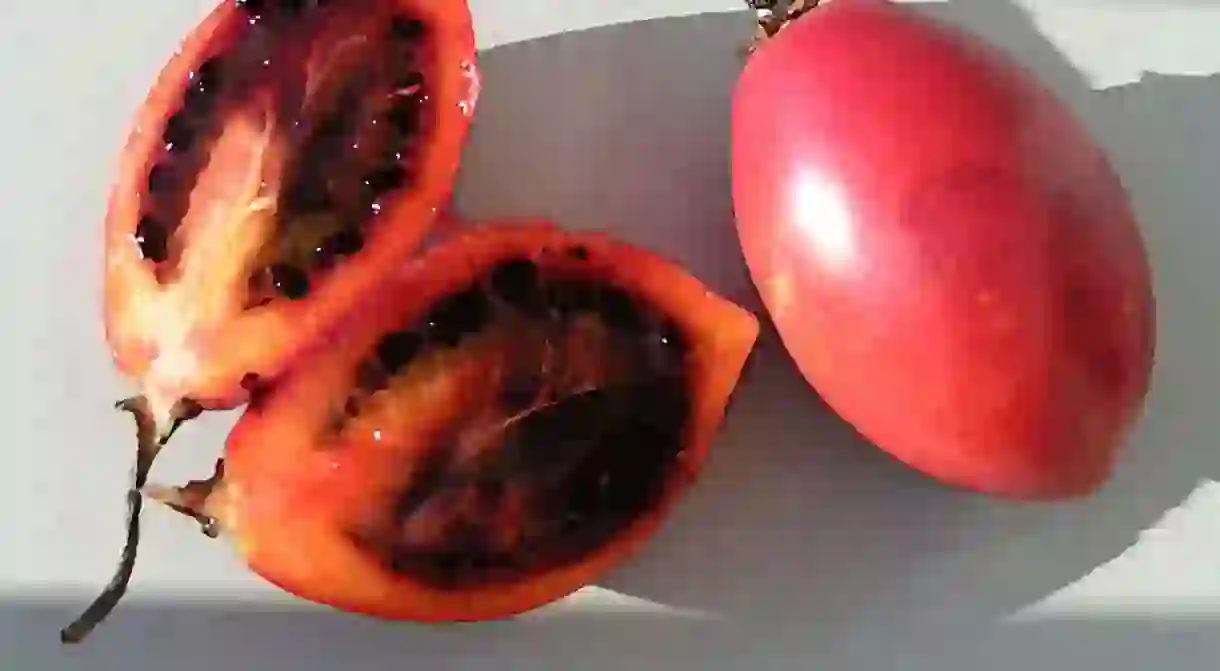6 Exotic Fruit Juices You Must Try in Ecuador

Ecuadorians love their fruit juices! Practically every restaurant and juice bar offers sweet and delicious fresh-squeezed orange juice, but from the green oranges. During the month of December, mandarin season starts. The mandarins of coastal Ecuador are also green and the size of grapefruits. Their juice is magnificent. And the list of fruit juices goes on – here are six exotic options for you to try.
Tomate de Arbol
The tomate de arbol, sometimes called tamarillo in English, is a favorite of Ecuadorians living in the Sierra. The fruit does have a mild tomato flavor but its juice does not taste like fresh tomato juice. Like many of the exotic fruit juice preparations in Ecuador, jugo de tomate de arbol is made in a blender; about four cooked pieces of fruit, skin removed, are blended in a liter of water. Because this fruit is not naturally sweet, it will arrive at the table pre-sugared unless you ask otherwise.

Guanabana
Guanabana is a huge fruit, about 12 inches tall and 6 inches around. It is called a soursop in English. Its skin is green and looks like a warty avocado but inside, its creamy white flesh is dotted with large black seeds. Ecuadorians rarely buy the whole fruit, preferring to buy packages of ready-to-blend pulp from the freezer sections of their local supermarkets. When blended, guanabana is the texture of a yogurt smoothie. If you really want to be adventurous, order a jugo de guanabana y mora, or a soursop and blackberry juice combo. It’s delicious.

Babaco
A babaco looks like a starfruit but is about the size of a large papaya. Inside, its flesh is spongy and a pale creamy yellow. Its juice tastes faintly of apples. A glass of babaco juice is an excellent refresher on a hot, sunny afternoon. Ecuadorians also use babaco to make a dessert called dulce de babaco.

Maracuya
The fruit of the maracuya is known as passion fruit in the United States. Each piece of fruit is small and round, about the size of a racquetball. Its rind is hard and requires a sharp knife to cut it in half. In order to make juice, Ecuadorians take the seeds and pulp of about 5-6 maracuya, which look a little like frog spawn, and scoop them into a blender. Then add a liter of cold water, blend, strain out the black seeds and add sweetener to taste.

Naranjilla
The fruit of the naranjilla grows in a similar manner as an eggplant, on a small bushy plant. In Colombia, this fruit is called lulo. When ripe, its skin is bright orange but its flesh is green with hundreds of tiny pale yellow seeds. To make the juice, take about a dozen naranjilla and peel with a knife. Place the flesh of the fruit in about a liter of water, blend, pour the juice through a sieve and add sugar to taste. Depending on the ripeness of the fruit, the finished juice may appear green.

Taxo
Taxo, also called curuba, is a relative of the passion fruit but looks similar to many cactus fruits. Native Ecuadorians have eaten taxo since before colonization. Its flavor is fairly mild but jugo de taxo leaves the tongue feeling dry, like after having a sip of very dry red wine or strong black tea. This is another exotic fruit juice that is best made in the blender. Take the flesh and seeds of about 5-6 taxo, place them in a blender, add a liter of water, blend, sieve the juice and add sugar to taste. When made with milk instead of water, it’s called a batido de taxo.














